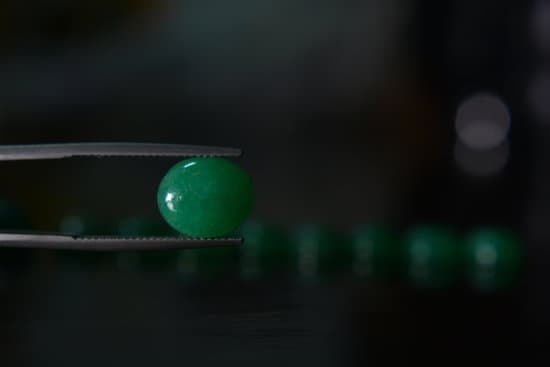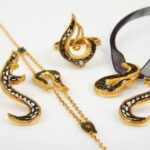What defies costume jewelry and fine jewelry? The answer lies in the history, materials, craftsmanship, and value of each. For centuries, jewelry has been an integral part of human culture, representing wealth, status, and personal adornment. This article explores the contrasting characteristics of costume jewelry and fine jewelry, delving into their origins, materials, design, pricing, significance in fashion and pop culture, and long-term value.
The distinction between costume jewelry and fine jewelry is rooted in their respective histories. Costume jewelry first gained popularity in the 1920s as a more affordable alternative to fine jewelry during the Art Deco era.
It was often made using less expensive materials such as glass or plastic stones set in base metals. Fine jewelry has a much longer history dating back to ancient civilizations, where precious metals and gemstones were used to create intricate designs for royalty and the elite.
Materials play a crucial role in defining costume jewelry versus fine jewelry. Costume jewelry typically utilizes non-precious metals like brass or copper with synthetic or imitation gemstones. Fine jewelry, on the other hand, features high-quality materials such as gold or platinum paired with genuine gemstones like diamonds, rubies, emeralds, and sapphires. The stark contrast in materials also contributes to their differing price points and perceived value in the market.
The Origins and Evolution of Fine Jewelry
Fine jewelry has a long and rich history that dates back thousands of years. From ancient civilizations to modern times, the evolution of fine jewelry has been shaped by cultural, social, and artistic influences. Here are some key points about the origins and evolution of fine jewelry:
1. Ancient Beginnings: Fine jewelry can be traced back to ancient civilizations such as Egypt, Mesopotamia, and India, where precious metals and gemstones were used to create exquisite adornments for royalty and the elite. These early pieces were often symbolic in nature, representing power, wealth, and religious beliefs.
2. Medieval Craftsmanship: During the Middle Ages, fine jewelry continued to evolve with the rise of skilled artisans who created intricate designs using gold, silver, and precious gems. The craftsmanship of medieval jewelers was highly esteemed, and their creations were often commissioned by royalty and nobility.
3. Renaissance Revival: The Renaissance era brought about a revival of classical art forms, inspiring new trends in fine jewelry design. Elaborate settings, colorful gemstones, and motifs inspired by nature were popular during this time, reflecting a celebration of beauty and individual expression.
4. Modern Innovations: In more recent centuries, advancements in technology have revolutionized the production of fine jewelry. Techniques such as diamond cutting, metal alloying, and gemstone setting have allowed for greater precision and creativity in design. Additionally, the discovery of new sources of precious metals and gemstones from around the world has expanded the possibilities for fine jewelry creation.
Overall, the evolution of fine jewelry has been marked by a continuous quest for innovation while honoring traditional craftsmanship techniques. From ancient beginnings to modern innovations, fine jewelry remains an enduring symbol of elegance and luxury.
Materials and Quality
Introduction to Costume Jewelry Materials
Costume jewelry is typically made from base metals, acrylic, glass, plastic, and synthetic gemstones. These materials are more affordable than those used in fine jewelry, allowing for mass production and accessibility. Despite being less costly, costume jewelry can still offer a wide variety of styles and designs.
The Role of Quality in Costume Jewelry
While materials used in costume jewelry may not be as valuable as those in fine jewelry, quality still plays a crucial role. The craftsmanship and attention to detail in costume jewelry can set it apart and make it desirable to consumers. Many costume jewelry pieces are handcrafted, and the use of high-quality plating techniques can ensure that the pieces retain their luster and appearance over time.
Distinguishing Between Costume Jewelry and Fine Jewelry Quality
The difference between costume and fine jewelry quality ultimately lies in the value of the materials used. While costume jewelry may be well-crafted with attention to detail, it does not contain precious metals or genuine gemstones found in fine jewelry. The value and rarity of these materials are what distinguish fine jewelry from its costume counterpart.
In summary, while both types of jewelry can be crafted with care and attention to detail, what defies costume jewelry and fine jewelry is the value of the materials used. Costume jewelry uses more affordable materials such as base metals and synthetic gemstones, while fine jewelry incorporates precious metals like gold and platinum along with genuine diamonds and other rare gemstones.
Precious Metals and Gemstones
When it comes to distinguishing between costume jewelry and fine jewelry, one of the most significant factors is the materials used. Fine jewelry is known for its use of precious metals and gemstones, setting it apart from the more affordable and less durable materials commonly found in costume jewelry.
Precious metals such as gold, silver, and platinum are often used in fine jewelry due to their rarity and value. These metals not only add to the aesthetic appeal of the jewelry but also contribute to its longevity and durability. In addition to precious metals, fine jewelry also features high-quality gemstones such as diamonds, sapphires, rubies, and emeralds. These gemstones are prized for their beauty, clarity, and rarity, making them highly valuable.
The use of precious metals and gemstones in fine jewelry also reflects the level of craftsmanship and attention to detail that goes into creating each piece. Skilled artisans carefully select and set these materials with precision, creating stunning works of art that can be passed down through generations. In contrast, costume jewelry often features imitation or synthetic stones, as well as base metals or alloys that may tarnish or wear down over time.
| Materials | Quality |
|---|---|
| Precious metals (gold, silver, platinum) | Rarity and value |
| Gemstones (diamonds, sapphires, rubies, emeralds) | Beauty, clarity, rarity |
Design and Craftsmanship in Costume Jewelry
The Rise of Costume Jewelry
Costume jewelry has been around for centuries, with its popularity rising and falling throughout history. Its origins can be traced back to ancient civilizations, where people adorned themselves with decorative items made from resources like shells, wood, and beads. However, it wasn’t until the 20th century that costume jewelry gained widespread popularity due to its affordability and accessibility.
Materials and Techniques
Unlike fine jewelry, costume jewelry is often crafted using base metals such as brass or copper, which are then plated with gold or silver. Other materials commonly used include plastic, glass, and synthetic gemstones. The craftsmanship of costume jewelry involves a combination of mass production techniques and hand assembly, allowing for intricate designs at a lower cost.
Innovative Designs
One of the defining features of costume jewelry is its ability to keep up with ever-changing fashion trends. Designers are constantly exploring new techniques and styles to create unique pieces that appeal to a wide audience. From statement necklaces to bold cocktail rings, costume jewelry offers a variety of designs that cater to different tastes and preferences.
Overall, the design and craftsmanship in costume jewelry highlight its versatility in adapting to current fashion trends while still offering affordable options for consumers. While it may not boast the same level of prestige as fine jewelry, the artistry and creativity behind each piece make costume jewelry a beloved choice for fashion-forward individuals worldwide.
Artistry and Innovation in Fine Jewelry
Artistry and innovation are two key elements that define the world of fine jewelry. Fine jewelry is characterized by its exceptional craftsmanship and attention to detail. The artistry of fine jewelry lies in the intricate designs, delicate settings, and unique pieces that are created by skilled artisans. From hand-crafted masterpieces to cutting-edge technological innovations, the world of fine jewelry continues to push the boundaries of creativity and design.
Innovation in fine jewelry involves the use of new techniques, materials, and technology to create pieces that are not only beautiful but also durable and long-lasting. Advancements in 3D printing, laser cutting, and computer-aided design have revolutionized the way fine jewelry is made, allowing designers to bring their visions to life with unprecedented precision and speed.
Additionally, innovation in sustainable practices has become increasingly important in the world of fine jewelry, with many designers striving to create environmentally-friendly pieces that uphold ethical standards.
One of the defining differences between costume jewelry and fine jewelry is the level of artistry and innovation involved in their creation. While costume jewelry may feature trendy designs at a more affordable price point, fine jewelry sets itself apart through its unparalleled craftsmanship, innovative techniques, and timeless beauty.
| Aspect | Description |
|---|---|
| Artistry | Fine jewelry is known for its exceptional craftsmanship. |
| Innovation | Advancements in technology and sustainable practices drive innovation in fine jewelry. |
Pricing and Value
When it comes to the world of jewelry, there is a clear distinction between costume jewelry and fine jewelry. One of the key factors that sets these two categories apart is the pricing and value associated with each. Here’s a closer look at why fine jewelry comes with a heftier price tag compared to its costume counterpart:
- Materials: Fine jewelry is typically crafted from high-quality materials such as 18K or 24K gold, platinum, and sterling silver. These precious metals not only add intrinsic value to the piece but also contribute to its durability and longevity.
- Gemstones: Another defining factor of fine jewelry is the use of precious gemstones such as diamonds, sapphires, rubies, and emeralds. These stones are prized for their rarity, clarity, color, and carat weight, making them highly valuable in the world of jewelry.
- Craftsmanship: Fine jewelry often undergoes meticulous craftsmanship by skilled artisans. From intricate designs to impeccable settings, the level of detail and precision in fine jewelry elevates its value.
In contrast, costume jewelry is generally made from more affordable materials such as base metals, acrylics, glass, and synthetic gemstones. While these pieces may still be stylish and attractive, they do not carry the same level of inherent value as fine jewelry due to their materials.
Ultimately, what defies costume jewelry and fine jewelry in terms of pricing and value boils down to the quality of materials used, the presence of precious gemstones, and the level of craftsmanship involved in creating each piece. This explains why fine jewelry commands a higher price tag and holds greater value compared to its costume counterparts.
The Significance of Costume Jewelry in Fashion and Pop Culture
Costume jewelry has played a significant role in the world of fashion and pop culture for decades. Unlike fine jewelry, costume jewelry offers an affordable way for individuals to accessorize their outfits with trendy and stylish pieces.
The term “costume jewelry” originated in the 1920s, during a time when fashion became more accessible to the general public. This type of jewelry gained popularity due to its ability to mimic the look of expensive, high-end pieces without the hefty price tag.
Throughout history, costume jewelry has been embraced by designers, celebrities, and fashion icons as a means of making a statement and expressing individuality. From the glamorous Hollywood stars of the 1950s to the bold and eccentric styles of the 1980s, costume jewelry has continuously adapted to reflect the ever-changing trends in fashion and popular culture. It has become synonymous with empowerment, self-expression, and creativity, making it an essential component of many iconic fashion moments.
In today’s fast-paced fashion industry, costume jewelry continues to hold its significance as a staple accessory in both high-end designer collections and everyday street style. With its versatility and affordability, costume jewelry allows individuals to experiment with different looks without making a long-term financial commitment. Its ability to transform an outfit from day to night or add a touch of personality to any ensemble makes it an essential part of contemporary fashion and pop culture.
Investment and Legacy
Fine jewelry has long been considered a valuable investment and a symbol of legacy. Unlike costume jewelry, which is often made with lower quality materials and may not stand the test of time, fine jewelry is crafted with precious metals and gemstones that ensure longevity. The durability of fine jewelry makes it a popular choice for passing down through generations, creating a lasting legacy that holds both sentimental and monetary value.
One of the key factors that sets fine jewelry apart from costume jewelry is the use of high-quality materials. Fine jewelry is typically made with precious metals such as gold, silver, or platinum, along with genuine gemstones like diamonds, rubies, sapphires, and emeralds. These materials not only contribute to the beauty of the piece but also ensure its longevity. Fine jewelry is designed to last for years, even centuries, making it a valuable investment for the future.
In addition to its durability, fine jewelry often holds significant value over time. The use of precious metals and gemstones means that fine jewelry can retain or increase in value over the years.
This makes it not only an investment in terms of personal adornment but also a financial asset that can be passed down through generations. The enduring nature and value of fine jewelry make it a timeless choice for those looking to create a lasting legacy for their loved ones.
Conclusion
As we have explored the rich history, materials, design, pricing, and significance of both costume jewelry and fine jewelry, it becomes clear that each type possesses its own unique allure and appeal. Costume jewelry may not contain precious metals or gemstones, but it often showcases innovative designs and craftsmanship that allows for a wide range of styles at more accessible prices.
On the other hand, fine jewelry has enduring value due to its high-quality materials and is often seen as an investment or a valuable heirloom that can be passed down through generations.
What defies costume jewelry and fine jewelry is not just the materials or price tag, but also the artistry and innovation that goes into creating each piece. Designers of both costume and fine jewelry continually push boundaries to create new trends while still honoring traditional techniques in craftsmanship. In this way, both types of jewelry play a significant role in reflecting the cultural and historical influences of their time.
In conclusion, it is important to recognize the distinctive beauty of both costume and fine jewelry. While they serve different purposes in terms of fashion, value, and legacy, they are equally valuable in their own right. Whether it’s a statement piece of costume jewelry to complement a trendy outfit or a timeless piece of fine jewelry to mark a special occasion, both types have an enduring place in the world of adornment.
Frequently Asked Questions
How Do You Differentiate Fine Jewelry With Fashion Costume Jewelry?
Fine jewelry and fashion costume jewelry are differentiated by the materials used and the craftsmanship. Fine jewelry is typically made with high-quality materials such as gold, silver, diamonds, and gemstones. The craftsmanship is also at a higher level, often involving intricate designs and precise settings.
On the other hand, fashion costume jewelry is made with less expensive materials like glass, beads, or base metals. The craftsmanship is generally not as detailed or refined as that of fine jewelry.
What’s the Difference Between Costume Jewelry and Regular Jewelry?
The main difference between costume jewelry and regular jewelry lies in the quality of materials and craftsmanship. Regular jewelry, also known as fine or real jewelry, is made with high-quality materials such as precious metals (gold, silver) and gemstones (diamonds, emeralds).
The craftsmanship involved in creating regular jewelry is usually much higher compared to costume jewelry. In contrast, costume jewelry uses less expensive materials like plastic, glass, or base metals and often involves less intricate workmanship.
What Is the Opposite to Costume Jewellery?
The opposite of costume jewellery would be fine jewellery or real jewellery. These terms refer to high-quality jewellery made from precious metals such as gold or silver and adorned with genuine gemstones like diamonds or rubies. The craftsmanship involved in creating fine jewellery is typically of a much higher quality compared to costume jewellery, reflecting its value and longevity.

Welcome to my jewelry blog! My name is Sarah and I am the owner of this blog.
I love making jewelry and sharing my creations with others.
So whether you’re someone who loves wearing jewelry yourself or simply enjoys learning about it, be sure to check out my blog for insightful posts on everything related to this exciting topic!





